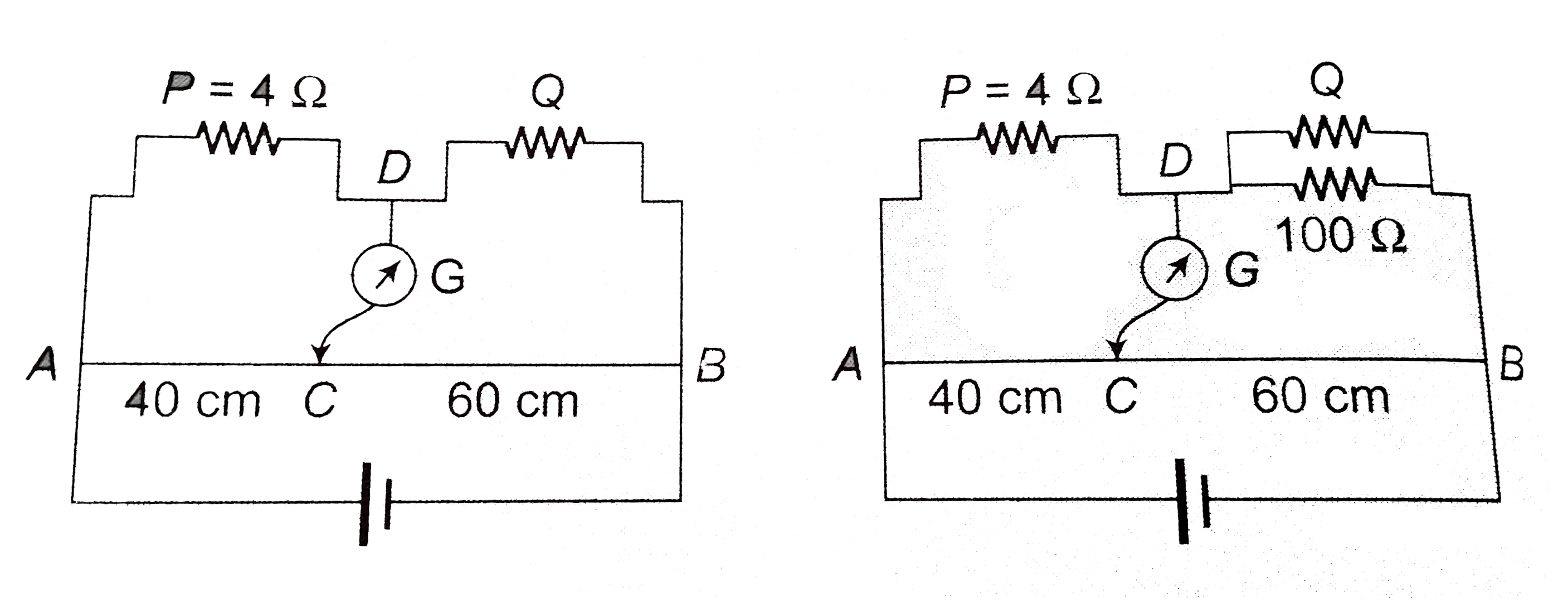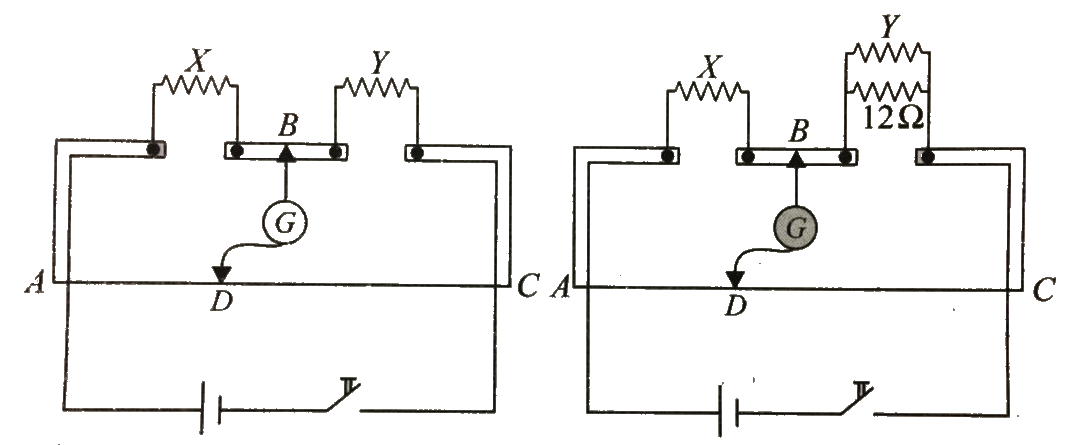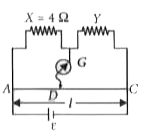As shown in the figure, a meter bridge consisting of two resistances and together in parallel with a meter-long wire of uniform cross-section. is a movable contact that can slide along the wire . The resistors and resistances of segments and of the wire constitude the four arms of bridge. the length is a coil of wire. With immersed in melting ice the null point is found to be at a distance of from . When the coil is heated to , a resistor has to be connected in parallel with in order to keep the bridge balanced at teh same point. Calculate the temperature coefficient of resistance of the coil.
 .
.
: resistance of in melting ice
: resistance of at
and are in parallel,
Equivalent resistance
.
Topper's Solved these Questions
Similar Questions
Figure 6.32 shows a meter bridge in the (which is nothing but a particle wheastone bridge), consisting of two resistors X and Y together in parellel with a meter long constantan wire of uniform cross section.


with the help of a movable contact d, one can change the ratio of resistance of the two segments of the wire until a sensitive galvanometer G connected across b and D shows no deflection. The null point is found to be at a distance of 33.7cm. The resistor Y is shunted by a resistance of 12Ω, and the null point is found to shift by a distance of 18.2cm. Determine the resistance of X and Y.View SolutionIn the given figure, diameter AB is 12 cm long. AB is trisected at points P and Q. Find the area of shaded region
View Solution
Knowledge Check
- Question 1 - Select One
Figure shows a meter bridge, wire AC has uniform cross section. The length of wire AC is 100 cm X is a standard do resistor of 4 Ω and Y is a coil. When Y is immersed in melting ice, the null point is at 40 cm from point A. When the coil Y is heated to 100∘C, a 100 Ω resistor has to be connected in parallel with Y in order to keep the bridge balanced at the same point. Temperature coefficient of resistance of the coil is
 A6.3×10−4K−1B4.3×10−4K−1C8.3×10−4K−1D2.3×10−4K−1
A6.3×10−4K−1B4.3×10−4K−1C8.3×10−4K−1D2.3×10−4K−1 - Question 2 - Select One
A Wheatstone bridge consisting of four arms of resistances P,Q,R,S is most sensitive when
Aall the resistances are equalBall the resistances are unequalCthe resistances P and Q are equal butR>>P and S>>QDthe resistances P and Q are equal but R<<P and S<<Q - Question 3 - Select One
A Wheatstone bridge consisting of four arms of resistances P,Q,R,S is most sensitive when
Aall the resistances are equalBall the resistances are unequalCthe resistances P and Q are equal butR>>P and S>>QDthe resistances P and Q are equal but R<<P and S<<Q
A wire of 3Ω resistance and 10cm length is stretched to 30cm length. Assuming that it has uniform cross-section, what will be its new resistance ?
View SolutionA uniform wire is cut into four segments. Each segment is twice as long as the earlier segment. If the shortest segment has a resistance of 4Ω, find the resistance of the original wire.
View SolutionWith the help of circuit diagram, explain how a meter bridge can be used to find unknown resistance of a given wire?
View SolutionThe resistance of a 50 cm long wire is 10Ω. The wire is stretched of uniform wire of length 100 cm. The resistance now will be
View SolutionThree resistances P, Q, R each of 2 12 and an unknown resistance S form the four arms of a Wheatstone bridge circuit. When a resistance of 6Ω is connected in parallel to S, the bridge gets balanced. What is the value of S?
View Solution

